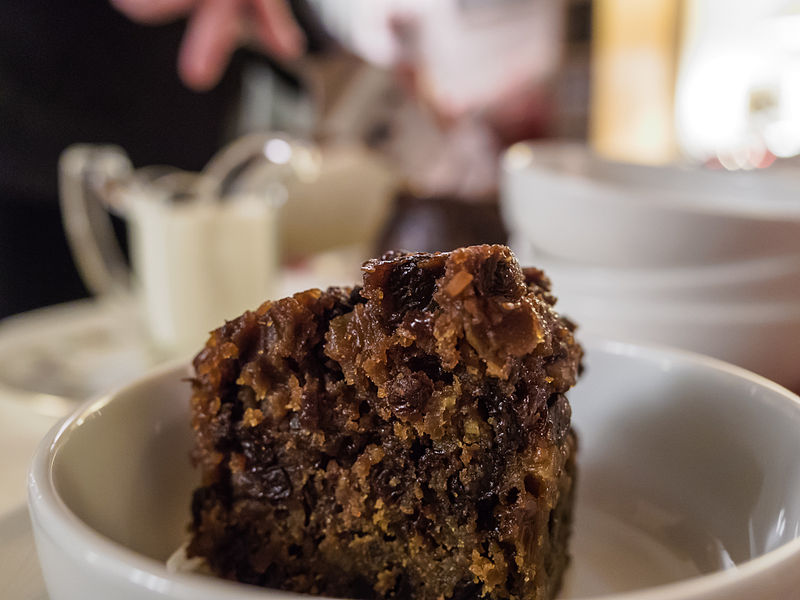This Sunday (21 November) is stir-up Sunday, when, traditionally, Christmas pudding is made. Beginning in Victorian times, customarily a family would gather to stir the pudding whilst making a wish on the Sunday five weeks before Christmas. The pudding would then be wrapped, boiled and set aside to mature for Christmas day.
There is a myth that the boiled, fruit-filled pudding was introduced to the Christmas table by George I to mark his first Christmas in England in 1714. However, the dish was not recorded as a Christmas pudding in a recipe book until 1845. Until that point it was known as plum pudding (plum was then a description for any dried fruit), although the very first variation of the Christmas pudding dates back to the figgy pudding of medieval England.
Christmas pudding was immortalised by Charles Dickens in A Christmas Carol (1843) where he describes Mrs Cratchit “Smiling proudly with the pudding, like a speckled cannon-ball, so hard and firm, blazing in half of half-a-quartern of ignited brandy and bedight with Christmas holly stuck into the top.”
In 1850, London Illustrated News described the pudding as a “national symbol”.
Should you feel inspired to bake your own Christmas pudding, we highly recommend Schwartz’s very easy recipe; this version can be kept in a fridge for up to three days, or in a freezer for up to six months.
Christmas puddings (including nut-free, gluten-free, alcohol-free and vegan varieties) are also widely available in our local shops including Fortnums and The Wolseley; just ask a member of our team if you would like any recommendations.
Photo credit: James Petts from London, England, CC BY-SA 2.0, via Wikimedia Commons

